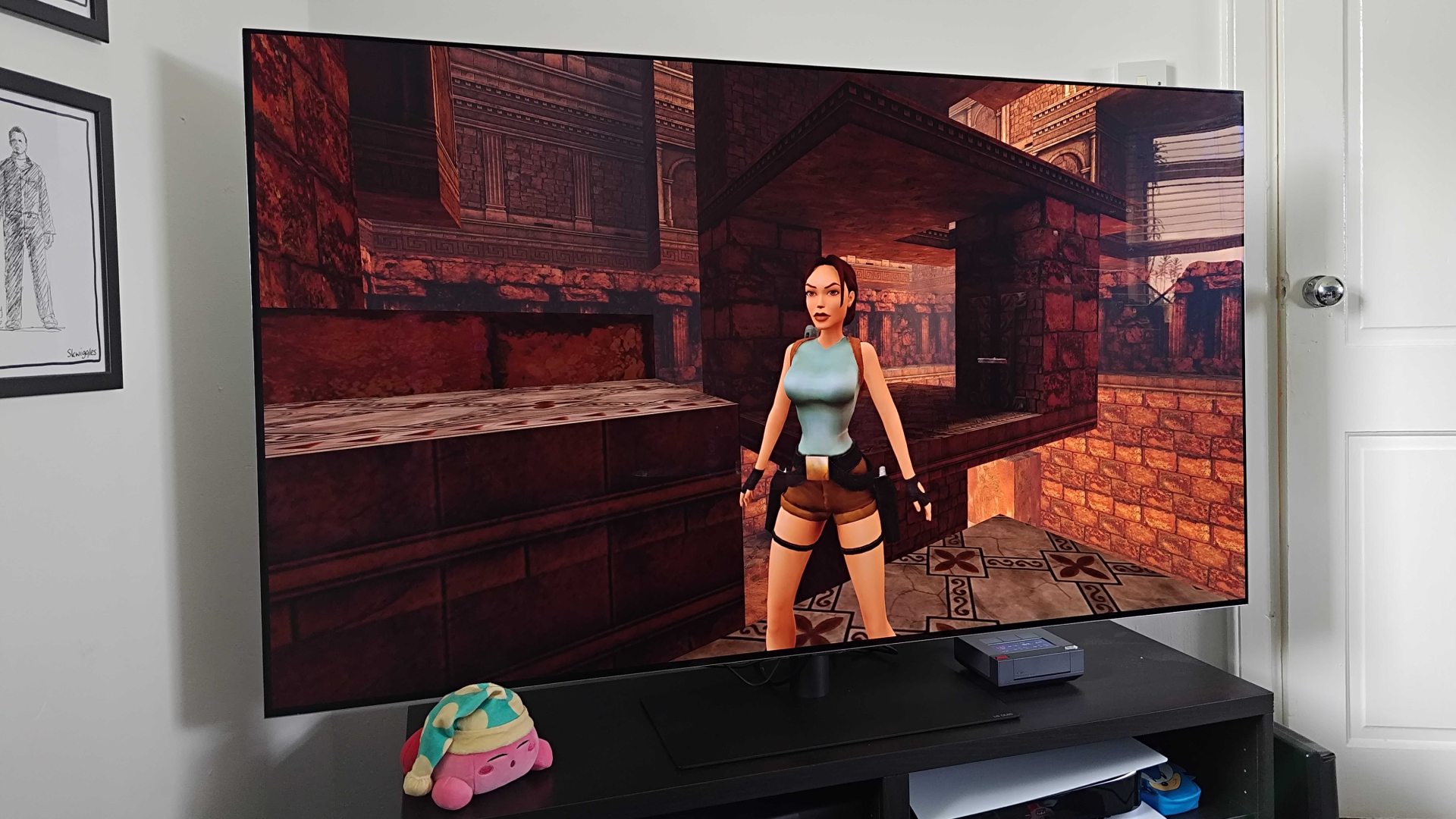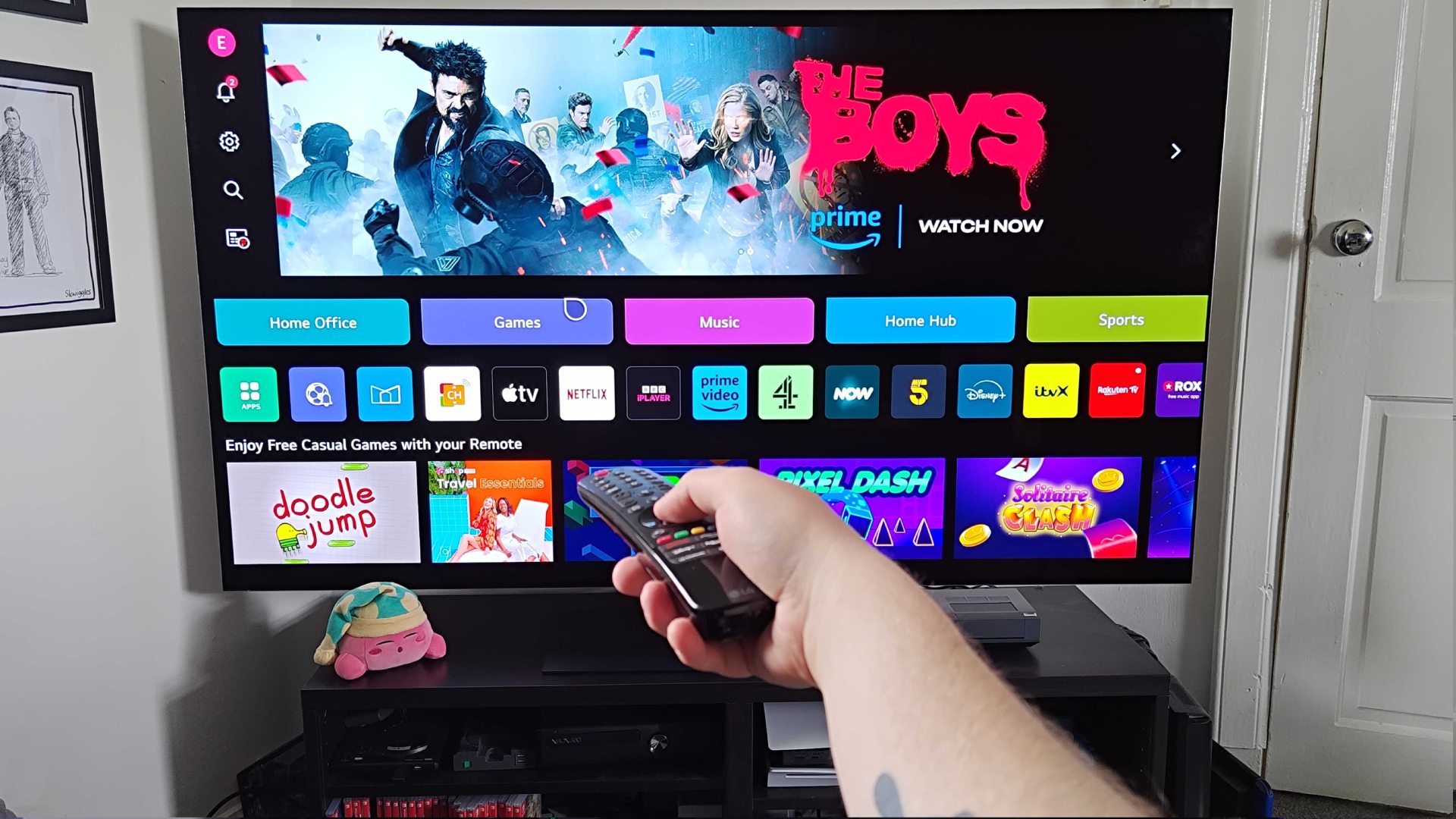Should you buy an OLED 4K TV for your gaming set-up during Black Friday?
OLED and QLED TVs offer premium TV tech for a premium price. Is it worth picking up one of these advanced 4K TVs during Black Friday in November?

With the biggest sale of the year coming up, you'll likely be wondering if you should buy a OLED 4K TV for your gaming set-up during Black Friday. The short answer is yes, as the November even will offer up record lows across Samsung and LG displays. But, part of the puzzle is working out whether you specifically need an OLED panel over a traditional LED screen or even a QLED or mini LED alternative. So, let's try and break everything down and simplify the process ahead of Black Friday 2024.
When you phrase the question like that above – is an OLED TV worth it for gaming? – then there's a simple answer. Yes. It is worth it, especially if you can pick up one in the Black Friday TV deals. It's worth it if you want deep blacks, fast refresh rates, better contrast ratios, lower power consumption and lighter TV sets than other display technologies. While there are caveats tied to the tech, most Black Friday OLED TV deals will really help revamp your setup, especially if you're still rocking a conventional LED model from a decade ago.
Anyone who's ever tried to wall-mount a 42-inch plasma screen knows we're in something of a golden age for TV design. OLEDs (and Samsung's QLEDs) are easily the best gaming TVs. Modern sets are so much better than those of 10 years ago, it's not even funny. They're higher resolution, much lighter, have streaming and voice assistant technology built-in, and don't have two inches of plastic bezel surrounding the screen.

What they do have, mostly, is LCD screens. These use a weird property of certain crystals to twist when a current is applied to them. Shine a light through from behind, apply the juice, and the crystal twists shut, blocking the light. There's your on/off pixel. Add colored filters, and you've got a full color display. The problem is, it doesn't block all the light, a small amount always seeps through, so black is never really black.
It may seem like it is, but try this: put on Alien, and compare the black of space with the black of the bezel around the outside of the screen. Suddenly, the screen's black appears to be nothing more than really, really, dark grey. This matters because if there's something lurking in the shadows, it's only going to be very slightly lighter than the shadows. If all the blacks and dark greys are crushed together into one color, you're not going to see what's there until it launches itself out and clamps its teeth around your throat.
How do they work?

Where LCD TVs require some sort of backlight - either a folded up fluorescent tube or an array of LEDs, OLED cells generate their own light. They're a bit like plasma displays in this sense, and plasmas were known for their greater contrast ratios than LCD. Still, LCDs won that battle, and it's now OLED's turn to prove it's the superior technology. Because they glow from within, OLED pixels can switch off completely, giving you a proper black for monsters to lurk in. They're also now much brighter than they used to be, providing a contrast ratio – the difference between the lightest and darkest tones they can display – that LCDs can only dream of.
Where does this glow come from? The O in OLED stands for 'organic'. The LED stands for Light Emitting Diode, a term you may already be familiar with. The organic layer lights up when a voltage is applied to it, meaning there's no actual backlight. Because of this, OLED displays can be made thinner and lighter than any LCD screen ever could. And because the organic layer is effectively a plastic that doesn't rely on a sheet of glass for support like an LCD, an OLED can be made flexible (see the Xiaomi Mix Alpha, a concept phone with a screen that wraps around all four sides) or even printed with an inkjet printer (you can buy a printed screen today, in the form of the Asus ProArt PQ22UK 4K HDR portable monitor - it's just a tiny bit expensive at £4,500). LG even has a TV that will roll up like a blind when you're finished with it.
Weekly digests, tales from the communities you love, and more

In fact, the only downside of OLED is the price, which – like all new technology – is bound to come down with time. Most OLED screen in TVs from Sony and LG are currently made by LG. Samsung may begin manufacture in the future, but it is currently pushing its Quantum Dot tech (QLED - which offers superior color contrasts) hard, and looking into MicroLED (where a single LED sits behind each colored pixel in the LCD array) instead of OLED.
Until another manufacturer starts threatening LG's dominance, prices are likely to remain high, and while an LG panel combined with Sony's top of the range processors makes for a fine viewing experience, the OLED tech is good enough that if it were to filter down into the budget market it would make a lot of people very happy. Once you've seen an OLED in action, it can be like night and day, the way a good plasma screen used to eat early LCDs for breakfast.
Models are typically available to suit all budgets, with the likes of the LG OLED G4 serving as a flagship. Down the scale, the OLED C3 is a slightly cheaper premium panel, while the OLED B3 occupies the midrange ring. You'll typically still find previous year models available, and prices start at the $600 mark if you're looking at A-series models. Of course, screen side will also affect pricing, so you'll want to stick with 55-inches and below if you're looking for maximum savings.
So should you buy an OLED TV for gaming? Yes. You'll get deeper colors, better contrast, and potentially refresh rates in excess of 240Hz if anyone ever makes a TV that supports them. What you won't have is a lot of money left in your bank account, and you need to decide if the rewards are worth the outlay.
Looking for more high spec screens? Check out 4K 120Hz Black Friday TV deals for more gaming options. We've also Black Friday gaming monitor deals for those of you who prefer to play at a desk.
Ian Evenden is an experienced freelance writer whose words can be found everywhere from GamesRadar and PC Gamer to T3 and Tom's Hardware. Ian spent years as the Production Editor for Edge magazine, and has gone on to contribute to a wide variety of gaming, computing, science, and technology publications for well over a decade. Legend has it that Ian disapproves of Oxford commas… sorry Ian, but there's no stopping us now.


